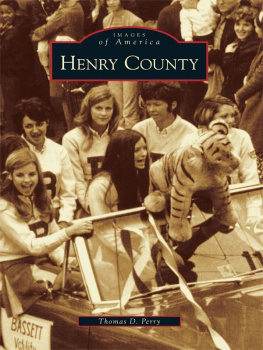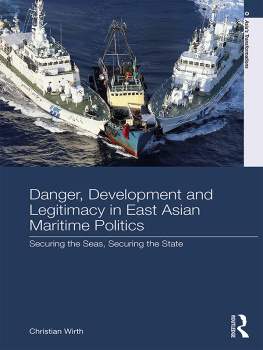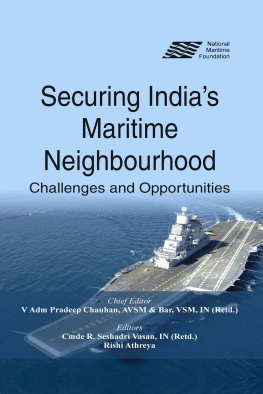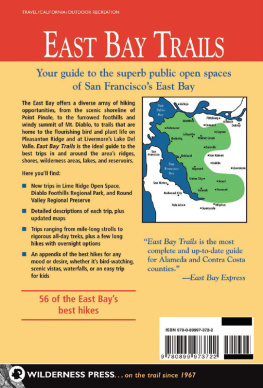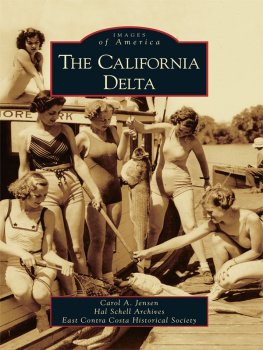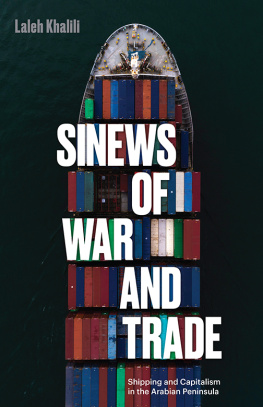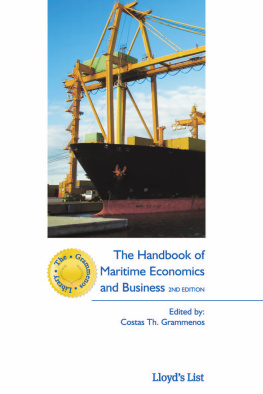
IMAGES
of America
MARITIME
CONTRA COSTA
COUNTY

ON THE COVER AND LEFT: The full-size image from the cover appears above. The little passenger-and-cargo ship Spig departs from Pittsburg for Stockton for an excursion day around 1926. On board are Swede, Elise, Mom, Liz, Allie, Andy, Flo, Hern, and Elsie, all in celebration mood and enjoying a busmans holiday from their regular maritime-focused lives. At left, Pop and Allie bask in the morning sun en route to Stockton. He is arm in arm with Allie, and Pops face tells it all: Life is sweet cruising along the Contra Costa County coastline. (Both, Pittsburg Historical Society.)
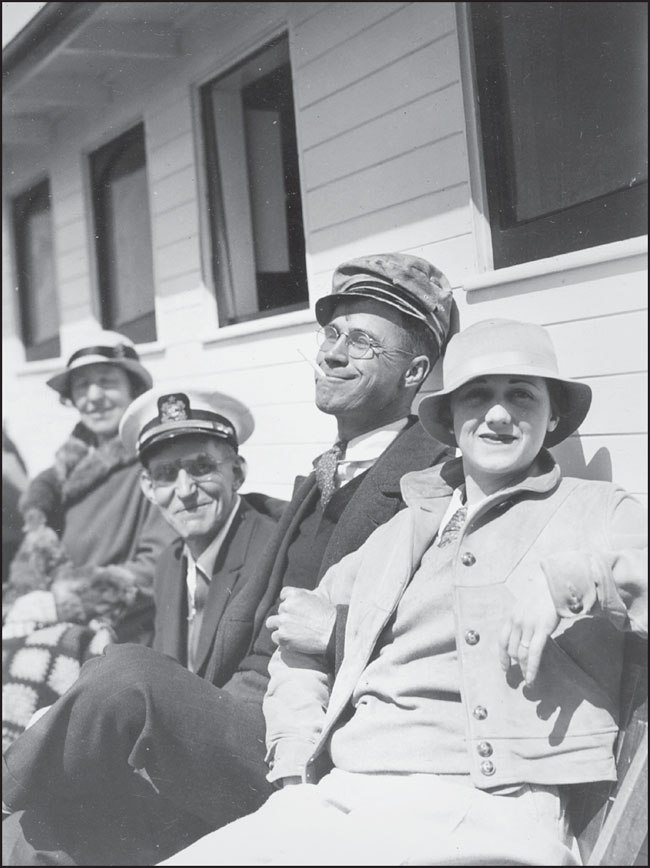
IMAGES
of America
MARITIME
CONTRA COSTA
COUNTY
Carol A. Jensen
East Contra Costa Historical Society

Copyright 2014 by Carol A. Jensen
ISBN 978-0-7385-9993-9
Ebook ISBN 9781439644478
Published by Arcadia Publishing
Charleston, South Carolina
Library of Congress Control Number: 2012953883
For all general information, please contact Arcadia Publishing:
Telephone 843-853-2070
Fax 843-853-0044
E-mail
For customer service and orders:
Toll-Free 1-888-313-2665
Visit us on the Internet at www.arcadiapublishing.com
To Judy, Judy, Judymemorable paraphrase of Cary Grant in Only Angels Have Wings, Columbia Pictures (1939)
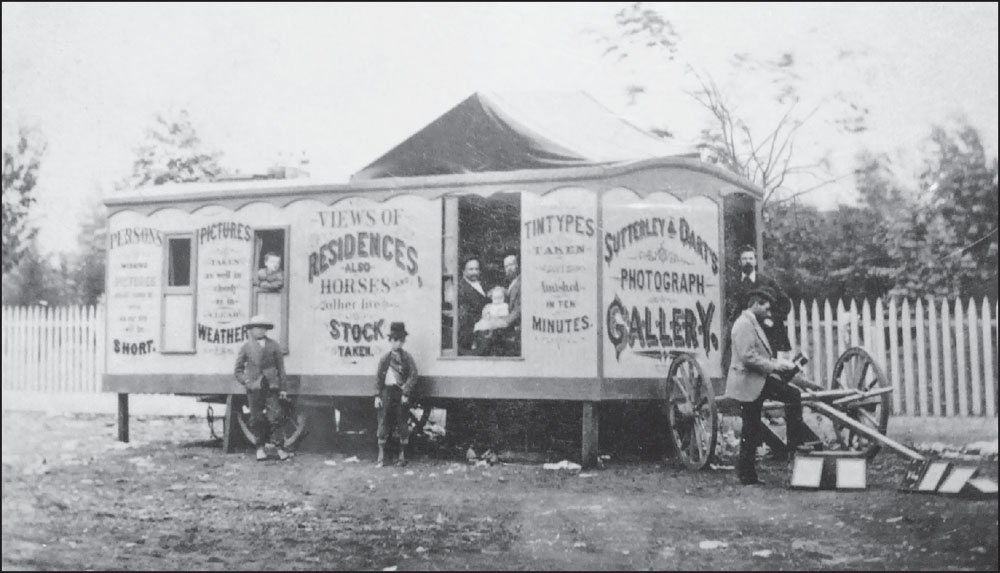
Persons, pictures, views, tintypes! Do not forget life along the river. Sutterley & Dart, itinerant partners in photography, traveled throughout Contra Costa County from 1875 to 1881, capturing domestic and commercial scenes. Their photography studio wagon doubled as a mobile portrait studio, glass plate developing room, and mobile home from 1875 to 1881. These pioneers traveled throughout the county through Concord, Pacheco, Martinez, Clayton, Antioch, Nortonville, and Point of Timber. (Contra Costa County History Center.)
CONTENTS
ACKNOWLEDGMENTS
Tom Trost of Bethel Island instigated the writing of this little book and encouraged the telling of this maritime story. Once the premise was devised, all the local shoreline historical societies scoured their collections for content. Warm appreciation goes to the following organizations and their staff members: executive director Priscilla Couden of the Contra Costa History Center and its Louis S. Stein Photographic Collection enhanced the quality and quantity of images included herein; the capable Contra Costa History Center volunteers, especially, were a great help; the Pittsburg Historical Society, Edmund Caruso, president, and Rosemarie DiMaggio, curator, and Frank DeRosa provided wonderful fishing industry images; Kathleen Correia, California State Library; Jeff Thomas, San Francisco History CenterSan Francisco Public Library; Debra Kaufman and Mary Morganti, California Historical Society Library and Archives; Carole Ann Davis, curator, and her assistant, Laura Jacques, Antioch Historical Society; Melinda McCrary, curator, Richmond Museum of History; and Jim and Joyce Metcalf, Rio Vista Museum. Kathy Leighton of the East Contra Costa Historical Society continues to inspire me to find and write about a local history niche. Thank you, one and all!
Members of the San Francisco Bay Area Postcard Club (www.postcard.org) were most helpful and added images from their personal collections for inclusion. My gratitude is extended particularly to club member Ken Prag of San Francisco for generously allowing use of his Contra Costa collection, Ted Miles, club member and curator of the San Francisco Maritime National Historical Park Library Collections, and Glenn Koch. Gina Bardi, librarian at the San Francisco Maritime Museum Library, was particularly enthusiastic about the project and kept me motivated. FedEx Office staff members Leticia Montgomery and Amelia Braga aided in the oversize-image scanning.
Finally, many individuals too numerous to list have been most generous in their encouragement and support. Robert Chandlers mantra rings in my ears: Nothing counts until it is written down. Thanks go to Jared Nelson, Arcadia Publishing acquisitions editor, for his continuing interest in the San Francisco Bay and delta. The aid and patience of the irreplaceable Robert D. Haines Jr., cannot be overstated. Writing is impossible without the excellent and thorough copy editor extraordinaire, Marcy Protteau. The errors and omissions in the writing are all mine.
Please contact the author at the e-mail address or through one of the above referenced historical societies if you can contribute to our maritime Contra Costa County history with an oral history, family documents, letters, photographs, or ephemera.
All images are from the authors personal collection except where indicated. The following organizations and collections generously allowed the use of their images: Antioch Historical Society (AHS); Bancroft Library, University of California, Berkeley (BANC); California Historical Society, San Francisco (CHS); California State Library, California History Room, Sacramento (CSL); Contra Costa County History Center (CCCH); East Contra Costa Historical Society (ECCHS); Glenn Koch (GK), Liberty Union High School District (LIB), Sam Mathews of the Tracy Press (SM), Dean McCloud (DM); Pleasant Hill Public Library (PH); Ken Pragg, private collection (KP); Pittsburg Historical Society (PIT); Richmond Museum of History (RICH); Rio Vista Museum (RV); San Francisco Maritime National Historical Park Library Collection (NPS); San Francisco Public Library, History Room, San Francisco (SFPL); United States Library of Congress, Washington, DC (LOC); and the United States National Archives, Bethesda, Maryland (NA).
INTRODUCTION
On August 5, 1775, the Spanish frigate San Crlos, commanded by Don Juan Manuel de Ayala y Aranza, sailed through the Golden Gate and opened California to the commerce of the world. The maritime history of San Francisco Bay begins with Ayalas survey and exploration of the region by ship, launch, and a redwood cayucoa canoe or dugout. The strong tides drove the party to the contra costathe opposite shorewhere the course of our maritime history begins.
According to the Oxford Encyclopedia of Maritime History, maritime history is the broad overarching subject that includes fishing, whaling, international maritime law, naval history, the history of ships, ship design, shipbuilding, the history of navigation, the history of the various maritime-related sciences (oceanography, cartography, hydrography, and so forth), sea exploration, maritime economics and trade, shipping, yachting, seaside resorts, the history of lighthouses and aids to navigation, maritime themes in literature, maritime themes in art, the social history of sailors and passengers, and sea-related communities. Contra Costa County embraces all of this in its 240-year history. This maritime history covers the economic history of the region, from Native American trade to modern water rights wars.
Maritime Contra Costa County history touches upon the many defining maritime subject areas, but focuses primarily on the use of the areas vast waterways in commerce. The waterway along the county shore is the liquid highway that links all agricultural, industrial, and commercial endeavors to executive headquarters in San Francisco. The land directly east of San Francisco comprises over 70 miles of deepwater moorage and over 1,000 miles of navigable waterways. The village of Yerba Buena and later the city of San Francisco stood sentinel to goods flowing in, out, and by Contra Costa. Minerals, munitions, and melons all rolled from the sides of Mount Diablo and the Sierra Nevada along the Contra Costa shore for transshipment out the Golden Gate. All shipping historically paid duties to San Francisco and profits made from this commerce enriched city businesses.
Next page

